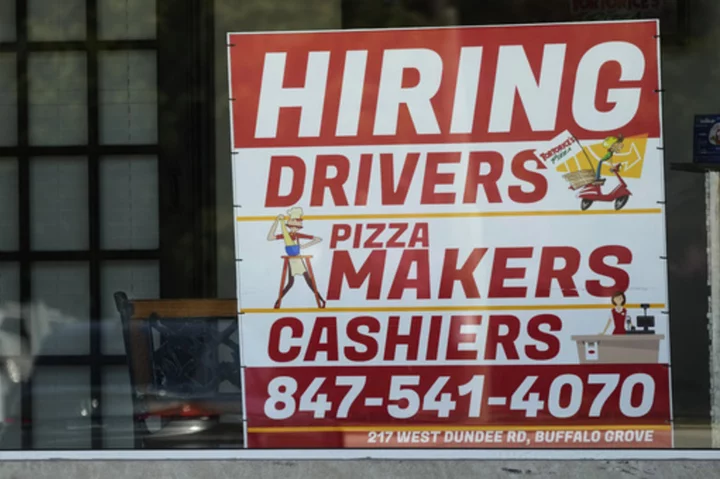The past few months of robust grocery store sales would suggest that shoppers aren't stretched for cash. But that's not the full story.
Food manufacturers like Kellogg, PepsiCo and Nestlé all reported sales growth in the first quarter of the year.
But even though sales are up, people are buying less. Growth has been fueled by higher prices, which offset declining volumes.
"If you look at the top-line dollar sales, it is obviously very positive," said Alastair Steel, executive, client engagement for market research firm Circana, where he works on strategy and consults for clients. "But it really is driven by price increases."
This year through May 21, compared to the same period in 2022, sales of fresh eggs by volume fell 4.7%, milk dropped 3.9%, packaged bread fell 3.8%, and fresh root vegetables slid 3.5%, according to Circana, which tracks US retail sales. in that time, dollar sales of eggs rose by 41.2%, milk rose by 0.9%, bread jumped 8.5% and fresh root vegetables rose 10.7%.
Prices of each of these items rose during that period. Fresh eggs shot up 48.2%, milk rose 5%, bread rose 12.7% and fresh root vegetables went up 14.7.
Steel noted that early in the pandemic, when people stopped eating at restaurants and stocked up on pantry staples, unit sales soared. Since then, they've been coming down. Some of that can be attributed to an "unwinding" of that 2020 boom, he noted. At that time, people could also use Covid stimulus payments to cover costs. Those who were working from home didn't have to spend money commuting.
"I do think budget constraints and financial constraints are making people be more careful in managing their consumption," Steel said.
By volume, grocery sales are still generally up compared to 2019, he noted. But that increase isn't so much a sign of extra cash — it's a sign that people are trading down from restaurants to preparing food at home.
Dining in isn't the only way that people are saving.
Trading down
Some Americans are trading down by going for cheaper items, or shopping at bargain stores.
At Costco, "we've seen people looking for better bargains," said the company's CFO Richard Galanti during a recent analyst call. He noted that during recessions, people typically buy poultry and pork instead of beef — as has been happening recently. Plus, beef prices have been pretty high.
Low-price grocers like Aldi have also seen an influx of customers searching for deals. And people are buying fewer discretionary items. Macy's recently cut its annual profit and sales forecast after customer demand slowed. During a recent analyst call, Macy's CEO Jeff Gennette said customers "reallocated [spending] to food, essentials and services."
Steel suspects that some people are able to buy less food by being stricter about food waste. "They're making sure they don't throw out food and eating leftovers," he said.
But for some it means going hungry, or turning to charitable organizations. Dollar General customers, for example, say "they're having to rely more on food banks, savings, credit cards," the chain's CEO Jeff Owen said on a recent analyst call.
In the coming months, more people may struggle to get the food they need.
Tighter restrictions on the Supplemental Nutrition Assistance Program, or SNAP, that are part of the debt ceiling deal mean hundreds of thousands of Americans are at risk of losing access to benefits. The changes follow the end of pandemic hunger relief programs in March.
Consumers can expect some relief in the grocery store in the coming months. But not much.
Grocery prices are dipping, but remain high
Grocery prices finally dipped in March, falling for the first time since September 2020, according to data released by the Bureau of Labor Statistics in April. The following month, grocery prices continued to fall.
But food inflation is still outpacing inflation overall, and grocery prices are still quite a bit higher than they were last year.
In the year through April, food prices went up by 7.7%, with grocery prices rising 7.1% and menu prices increasing 8.6%, according to the latest data from the BLS' Consumer Price Index. Prices overall rose 4.9% throughout the year.
Some food corporations have said that they're slowing their rate of price increases.
PepsiCo, for example, has said that it probably won't need to raise prices much more this year. "The majority of our pricing is already done," said CEO Ramon Laguarta during an April analyst call.
But that's not the same as lowering prices altogether.
"I don't believe that price is going to come down," said Steel. "The rate of increase is starting to slow down and stop. But it's not completely gone away. We are still seeing prices, month over month, they're still going up — although much less than they were."
— CNN's Nathaniel Meyersohn contributed to this report.









